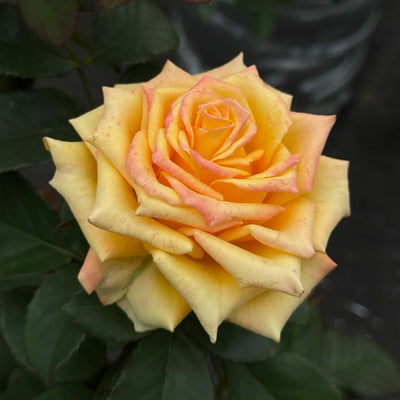🔥 Recommended Product
The Essential Guide to Pruning Roses
Pruning roses often seems surrounded by mysteries and countless rules. However, after pruning hundreds of roses over the past decade, I’ve learned one critical lesson: roses are incredibly forgiving. Whether you cut high or low, or leave inward- or outward-facing buds, it usually doesn’t make much difference in the long run. If a rose doesn’t grow in the desired shape or direction, simply correct it with another cut. Once you realize it’s difficult to make irreparable mistakes, pruning becomes much less intimidating.
General Rules for Pruning Roses
-
Do Not Prune Old Roses (Once-Blooming Varieties) Out of Season
These roses bloom on canes that grew during spring. Pruning at this time may sacrifice their flowers. -
Avoid Pruning Newly Planted Roses
New roses need time to establish a strong root system. Prune only dead or diseased branches during this period. -
Lightly Prune Roses Planted Within the Year
While these roses have grown for a season, they may not have developed many branches. Light pruning encourages future growth.
Basic Tips for Rose Pruning
-
Use High-Quality Tools
Invest in sharp, well-lubricated pruning shears. Avoid anvil-type shears, which can damage bark, and never use knives. For thick branches or hard-to-reach spots, a small pruning saw is indispensable. -
Wear Protective Gear
Use durable gloves that cover your forearms. Pair these with sturdy clothing, such as denim and long sleeves, to protect against scratches. -
Remove Leaves After Winter Pruning
Old leaves can harbor diseases over winter. After pruning, spray the plant with pesticide to reduce pests and diseases in the upcoming spring. -
Prune Safely
Be cautious to avoid injuring yourself. With experience, pruning becomes second nature, and injuries become rare. If unsure, check your tetanus vaccination history. -
Start at the Bottom
Begin pruning from the base of the plant while keeping an eye on the top. This prevents hesitation or second-guessing. -
Pay Attention to Bud Directions
Rose branches grow toward the direction of the top bud. To encourage outward growth, prune to an outward-facing bud; for inward growth, prune to an inward-facing bud. Make the cut about 6 mm (1/4 inch) above the bud. Cutting too close may harm the bud, while cutting too far leaves unsightly stubs prone to disease. -
Remove Dead or Diseased Branches
Prune down to healthy wood. Branches with discolored pith (the core) are often damaged or diseased. While they may still bloom, they tend to die back in summer. -
Maintain Plant Shape
Prune one-third to one-half of the plant, leaving healthy branches and an open center to promote airflow. -
Don’t Worry About Sap
If liquid seeps from pruned branches, it’s not harmful. No evidence suggests sealing cuts is necessary for roses.
Pruning Techniques for Different Rose Types
Hybrid Teas, Grandifloras, and English Roses
The extent of pruning depends on your goal. For exhibition blooms, prune heavily to reduce the number of flowers but encourage larger ones. For garden aesthetics, leave 4–6 canes, each around 90 cm (3 feet) tall. Remove interior branches to improve airflow.
Floribundas
Prune similarly to hybrid teas, but since these plants are smaller, focus on shaping and removing inward-growing branches to enhance airflow.
Shrub Roses
Light pruning is typically sufficient. Focus on maintaining shape and removing dead or weak branches. Prune out the center if necessary for better growth.
Miniature Roses
For exhibitions, prune slightly less than hybrid teas. For garden purposes, remove dead or weak branches and open the plant’s center to control growth.
Climbing Roses
For repeat-blooming climbers, prune during dormancy. Remove dead or weak canes, and trim side shoots to 3–5 buds. Preserve horizontal branches to encourage blooming.
Old Garden Roses and Species Roses
Varieties such as Albas, Bourbons, Centifolias, and Gallicas bloom only once. Do not prune these in winter. Instead, prune immediately after flowering. Remove old, dead, or weak branches, and aim to cut back one-third of the oldest branches each season to encourage new growth.
Ramblers
Prune ramblers after their spring bloom. Shape and control growth by removing dead or weak canes. Horizontal training encourages side shoots and maximizes flower production. Secure branches to walls, arbors, or fences to enhance their display.
By following these guidelines, you’ll ensure healthy roses that flourish season after season. Whether you’re shaping for beauty, encouraging blooms, or maintaining plant health, the art of pruning empowers gardeners to bring out the best in their roses.

















































